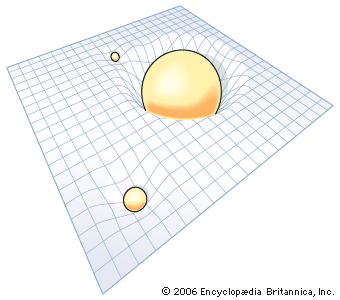100 years ago, Albert Einstein released his paper, “The Foundation of the General Theory of Relativity.” Before this theory we did not really understand how gravity worked. Newton told us about the "strength" of gravity, but his theory didn’t tell us how gravity pulls on things.
Einstein was deeply puzzled by the topic. How does the Sun keep the Earth in orbit? What is gravity?
In a Swiss patent office in 1907, Einstein had what he called, “the happiest thought of his life.” He imagined a man falling from the roof of a house and he realised that man would not feel his own weight as he fell—he would feel "weightless."
This phenomenon is called "free-fall" and it happens when an object falls on its own. Someone who is standing is not in free fall, but someone jumping from an airplane is (until air resistance builds up). You may have felt something like this for a brief moment in an elevator or at takeoff on an airplane.
Even better, you can test this idea at home! If you take a pop bottle with holes in it and fill it with water, unscrewing the lid slightly will cause the water to leak out due to air pressure. But, let go of the pop bottle and the water stops pouring! Check out the video to see this in action.

After thinking about this idea for 8 years, Einstein realised that space is like a stretchy sheet of fabric that warps when objects are on it. Scientists call this spacetime. Bigger objects like the Sun warp space more than objects like the earth. Seeing space and time as two aspects of the same thing lead to very interesting consequences.
The really cool effects of relativity like time-dilation and length-contraction don’t show up in our everyday lives, as they tend to happen at speeds close to the speed of light. However, there are many things that couldn’t happen without general relativity such as GPS and electromagnets.